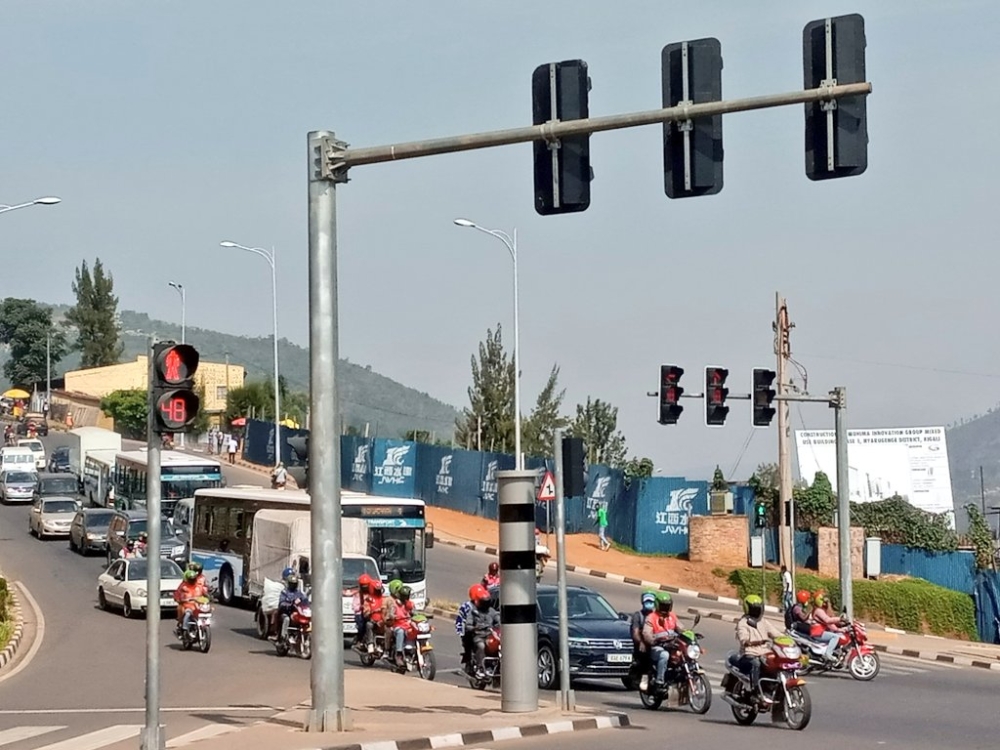

The Minister of Finance and Economic Planning, Uzziel Ndagijimana, and Isao Fukushima, the Ambassador of Japan in Rwanda, signed a financing agreement worth $14.6 million (about Rwf18bn) to fund the Intelligent Transport System (ITS) in Kigali on October 5.
The intelligent transport system is expected to reduce traffic congestion, improve safety, and mobility, and improve transport efficiency within and through Kigali.
ALSO READ: Smart Kigali: 400 buses connected to 4G Internet
Intelligent Transport System (ITS) enriches users with prior information about traffic, local convenience, real-time running information, seat availability, and others which reduce the travel time of commuters as well as enhance their safety and comfort.
ALSO READ: Kigali City names three roads to be dedicated to public buses
The system saves passengers’ time and makes the city even smarter. One such example is the city of Glasgow.
In the city, the Intelligent Transport System gives regular information to the daily commuters about public buses, timings, seat availability, the current location of the bus, time taken to reach a particular destination, the next location of the bus, and the density of passengers inside the bus.
Bus operators in the city have sensors in their buses.
So, if the bus is going to be early to the next stop, the bus is temporarily and very slightly slowed down at the red light a little longer than it should be to make sure the bus is on time and not ahead of the schedule.
The entire application of ITS is based on data collection, analysis, and using the results of the analysis in the operations.
Here, sensors, information processors, communication systems, roadside messages, GPS updates, and automated traffic prioritisation signals play an imperative role.
How does an Intelligent Transport System work?
The Traffic Management Centre (TMC) is the vital unit of ITS. It is mainly a technical system administered by the transportation authority. Here, all data is collected and analysed for further operations and control management of the traffic in real time or information about local transportation vehicles.
Well-organised and proficient operations of the Traffic Management Centre depend on automatised data collection with precise location information rather than analysis of that data to generate accurate information and transmit it back to travellers.
Strategic planning needs precise, extensive, and prompt data collection with real-time observation. So, the data here is collected via varied hardware devices that lay the base of further ITS functions. These devices are Automatic Vehicle Identifiers, GPS-based automatic vehicle locators, sensors and cameras.
The hardware mainly records data like traffic count, surveillance, travel speed and travel time, location, vehicle weight, delays, and others.
These hardware devices are connected to the servers generally located at a data collection centre which stores large amounts of data for further analysis.
Rapid and real-time information communication is the key to proficiency in ITS implementation as this aspect of ITS consists of the transmission of collected data from the field to TMC, and then sending the analysed information from TMC to travellers.
Traffic-related announcements are communicated to the travellers through the internet, SMS, or on-board units of the vehicle.
Other methods of communication are dedicated short-range communications (DSRC) using radio and Continuous Air Interface Long and Medium Range (CAILM) using cellular connectivity and infra-red links.
Travel Advisory Systems (TAS) are used to inform transportation updates to the traveling user.
The system delivers real-time information like travel time, travel speed, delay, accidents on roads, changes in route, diversions, work zone conditions etc.
This information is delivered by a wide range of electronic devices like variable message signs, highway advisory radio, internet, SMS, and automated cell.
In March, 2023, it was announced that Korea in the next three years, will help develop an Intelligent Transport System (ITS) as well as an integrated control centre in Kenya connecting Konza – Nairobi Corridor Transport System.
Smart cities leading the way in advanced intelligent transportation systems
Singapore’s data-rich intelligent transportation system, with its ability to deliver real-time traffic alerts to the public, has made the city one of the least congested in the world.
New York City is known for its exceptional public transportation, and the city is continuing to innovate by developing an intelligent transportation system.
New York City has already been investing in connected infrastructure and adaptive signals, installing cameras and sensors at over 10,000 city intersections.
London is taking its infrastructure into the future by leading the way in 5G infrastructure. The Smart Mobility Living Lab in London (SMLL) is deploying the world’s most advanced urban testbed to provide 5G connectivity for connected and autonomous vehicles.
Paris is also focusing on road safety and traffic management, decreasing traffic fatalities by 40% since 2010.
It is advancing its already established intelligent transportation system and invested €100m to adapt infrastructure to facilitate mass deployment of connected and autonomous vehicles.
Beijing has employed this and other connected car technologies, along with embedded sensors and cameras, to monitor traffic and road conditions. Big data analysis and AI are used to power intelligent transportation management systems to keep the city moving.
Berlin's latest mobility project centres on in-ground sensors at roadway intersections. This vehicle detection system will use wireless technology to deliver traffic data for intelligent traffic management.
Seoul’s intelligent transportation system uses sensors around the city to collect data so as to anticipate and prevent traffic congestion. The system also has the capability to warn citizens of problems and advise alternative routes in real time. In keeping with its tradition of innovation, the city is investing in 5G infrastructure and connected vehicles.
The city already employs an intelligent traffic management system based on asphalt and infrastructure sensors.


